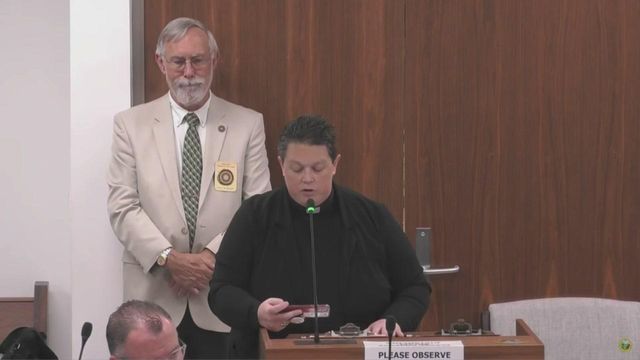Forced into the balcony: How Black movie-goers peaceful demonstrations shook segregation in Durham theaters
During the Jim Crow era of segregation, something as simple as watching a movie was a completely different experience for Black men and women in America. Today, the balconies of many old theaters in North Carolina once served as the segregated seating area for Black members of the audience.
"This was the segregated world of the Southern movie theater – one that left Black movie patrons with a demeaning, confining, and humiliating entertainment experience," described Susannah Broun in a historic paper documenting the struggle to de-segregate theaters.
When the Carolina Theatre opened as the Durham Auditorium in 1926, it was the only theater in town to even admit Black patrons. Even so, watching a movie meant climbing nearly 100 stairs and sitting in a small, crowded space far away from the main screen.
However, a civil rights movement in Durham shocked the nation when Black movie patrons refused to accept "no" for an answer at white ticket booths.

'Segregation was rigid' during a time when cinema played a major role in daily life
"Growing up in Durham, by-and-large, segregation was rigid. People lived in segregated communities," recalled Walter Jackson, who was just a teenager in the 1960s when the civil rights demonstrations began.
He remembers when movie-going was much more central to people's lives – back in the 50s and 60s – than it is today. In that era, many Black movie-goers sought to escape from their reality.
At Carolina Theatre, Black patrons were restricted to the top balcony – and it took a 97 step journey to get there, with each step indicative of the heights Black people had to reach to feel included. Even the elderly were not excluded from the potentially grueling climb.
The segregated balcony area was often spoken about with slurs and disrespect, according to Charlene Regester, associate professor of African American and Diaspora studies at UNC Chapel Hill.
"Balconies were given the name the 'buzzards roofs.' It was also called the 'crow's nest,' and I think some people even referred to it as the 'peanut gallery,'" said Regester.
Many theaters went so far as to have a separate entrance for Black patrons, including a separate concession stand and even a stairway that went directly to the balcony so Black and white patrons did not cross paths at all. The Cary Theater, for example, has a bricked up doorway that once served as the entrance for Black movie-goers. Some theaters offered what they called "midnight rambles," allowing Black patrons to come see movies late at night after the white patrons had gone home.
"It was such a cruel system," Jackson said. "It was dehumanizing. It cast a mark on our city, our state, and our nation, and we banded together to bring about a change."

'A fearful time:' Refusing to take 'no' for an answer
Jackson was a student at Hillside High School when a movement called "round robin" rocked Durham and other cities across the country .
Black movie-goers would stand in line at the 'white-only' ticket windows – only to be turned away. Then they would go to the end of the line and try again.
Jackson says despite the peacefulness of the demonstrations, it was a fearful time.
"There were people being attacked by dogs and being put in jail," he said.
There were even times when people who opposed integration would take matters into their own hands and stand outside establishments with guns and weapons.
By 1963, the Carolina Theatre became one of the first theaters to desegregate.
"It was a burden lifted to see those walls begin to fall," said Jackson.
Vaudeville focused on hiring Black entertainers
The seeds for the "round robin" movement and equal access to entertainment were planted long before – when Vaudeville took center stage in the early 1900’s.
The National Vaudeville Circuit focused on getting Black performers jobs across the country.
"It basically served as a training ground for Black artists. They learned how to be musicians, composers, dancers, singers," said Michelle Scott, a University of Maryland professor who wrote a book on the impact of the Theatre Owners Booking Association.
"It also served as a test or a space where they can kind of test their business skills," she added.
Places like Wonderland and Regal Theaters were the most notable cultural outlets in the Bull City, where entrepreneurship in the Black community was on the rise in places like Black Wall Street.
Jackson says overcoming the racial divide in the entertainment industry had long-lasting influence.
"We had no idea of the impact that what we were doing would have, but it has literally changed the world," he said.
The Carolina Theatre is celebrating the 10th anniversary of its Confronting Change exhibit, highlighting the truth of the past and the impact of change. It is open to the public. Several events are planned leading up to the anniversary in April. You can learn more about those events and the exhibit on The Carolina Theatre's website.









